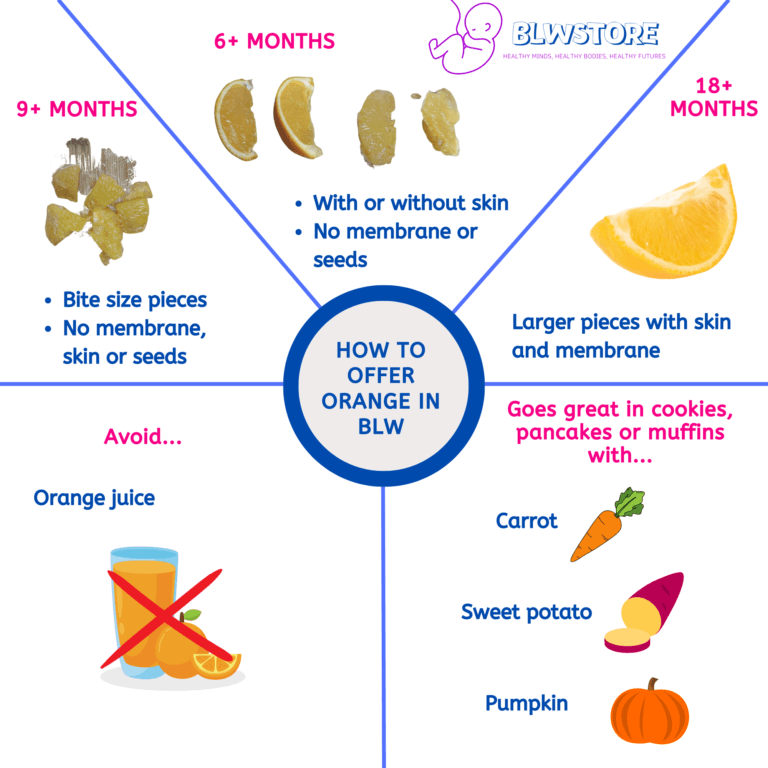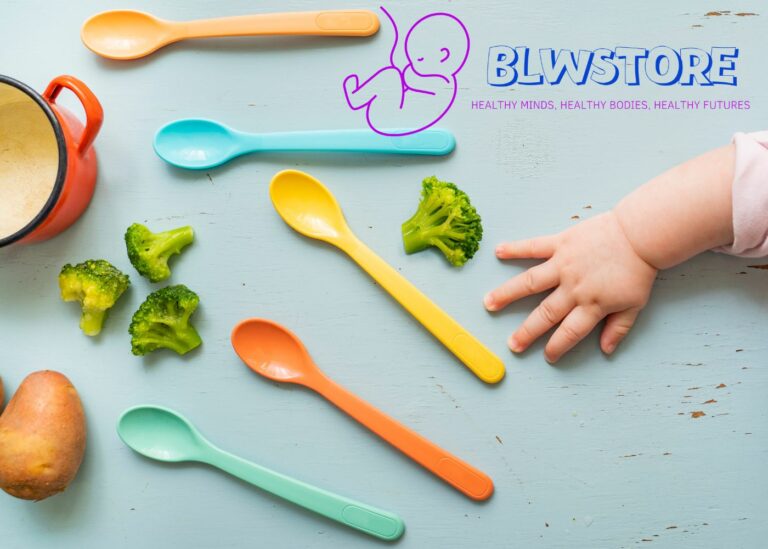
Starting solid foods is an exciting milestone in a baby’s development, and the Baby Led Weaning (BLW) method is a popular way to introduce solids to your little one.
BLW encourages babies to feed themselves, allowing them to explore textures and flavors at their own pace.
Mangoes, with their sweet and juicy taste, can be a great fruit for BLW, but it is important to consider their texture and ripeness when offering them to your baby.
This guide will provide you with all the information you need to know about incorporating mangoes into your baby’s BLW journey.
Key takeaways
- Mango is a delicious tropical fruit that is also known as the “king of fruits”.
- It can be a great first food for babies, introduced through baby-led weaning to allow them to explore it independently.
- Mango is an excellent source of dietary fiber and vitamin B, and it is a powerful antioxidant that helps protect blood vessels and the heart from disease.
- Before introducing mango to a baby, it is important to be aware of potential allergic reactions and start with a small portion, waiting for any signs before giving more.
- When cutting a mango, a sharp knife and a chopping board are essential, as the whole mango pit can be slippery and difficult to cut.
- Green mango is a great variety that has a slightly sour taste and works well in sweet dishes.
- Mango is a great first food for babies and kids of all ages, but it should be offered in small portions and appropriate sizes for their body.
Is Mango Safe for Babies?
Mango is a safe fruit for babies to eat. It is a great addition to a healthy diet and can provide many benefits when incorporated into your baby’s meals.
However, it’s important to always introduce new foods one at a time and monitor for any potential allergies.
| Benefits of Mangoes in BLW |
|---|
| 1. Good Source of Nutrients |
| Mangoes are a rich source of vitamins and minerals, including vitamin C, folate, and potassium, which are essential for healthy growth and development in babies. |
| 2. Aids Digestion |
| Mangoes contain fiber and digestive enzymes that help to regulate digestion in babies and reduce constipation. |
| 3. Boosts Immunity |
| Vitamin C in mangoes helps to boost the immune system, protect against infections, and support the overall health of babies. |
| 4. Promotes Brain Development |
| Mangoes are a good source of vitamins and minerals that support brain development, such as vitamin B6 and folate. |
| 5. Supports Vision Health |
| The presence of vitamin A in mangoes helps to promote good vision health and eye development in babies. |
Preparing Mangoes for BLW
Introducing new foods to your baby can be exciting, and mangos are no exception.
To ensure a positive and safe experience for both you and your baby, it’s important to choose ripe, fresh mangos and prepare them correctly.
Choose the Best Mangoes
Introducing new foods to your baby can be exciting, and mangos are no exception.
To ensure a positive and safe experience for both you and your baby, it’s important to choose ripe, fresh mangos and prepare them correctly.
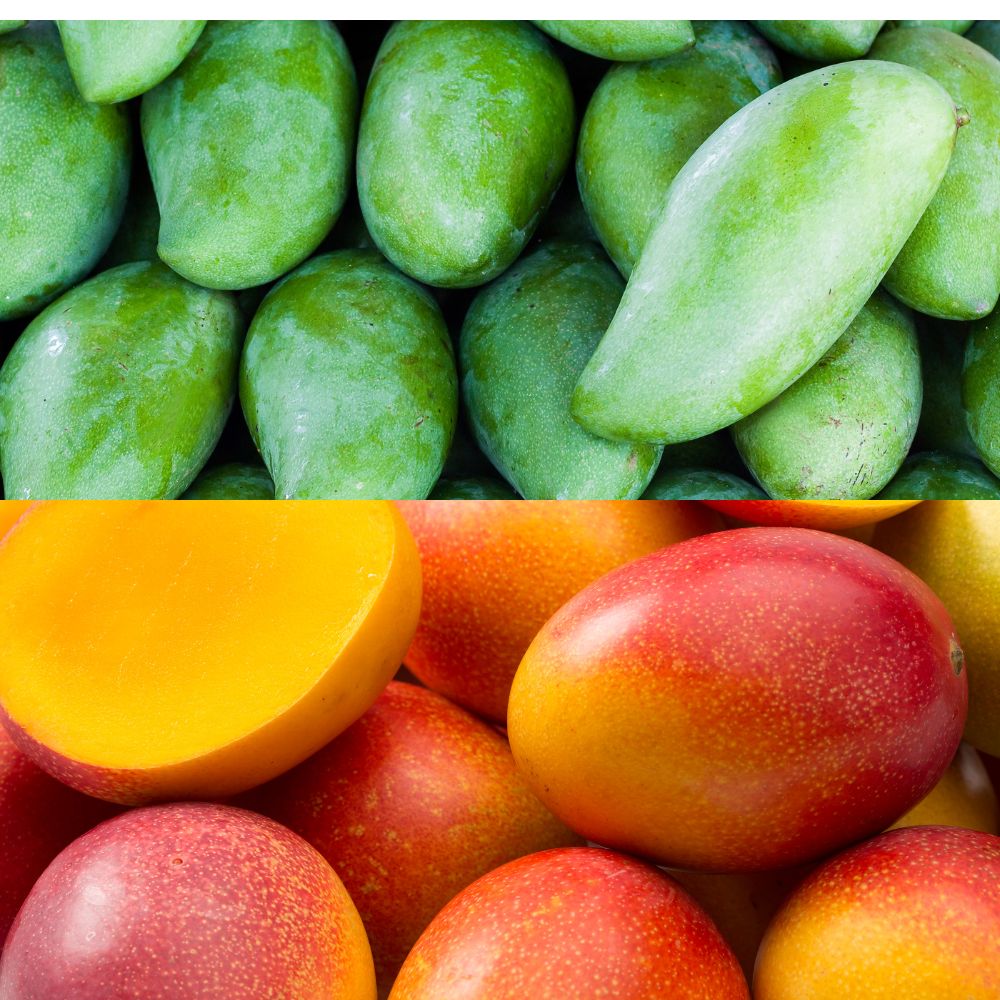
Washing & Cutting Mangoes
Wash the mango under running water to remove any dirt or residue. Cut the mango in half lengthwise, following the pit down the center.
Use the blade to carefully score the flesh of the mango into cubes, leaving a small border around the skin. Your baby can then easily pick up and eat the pieces with their hands.
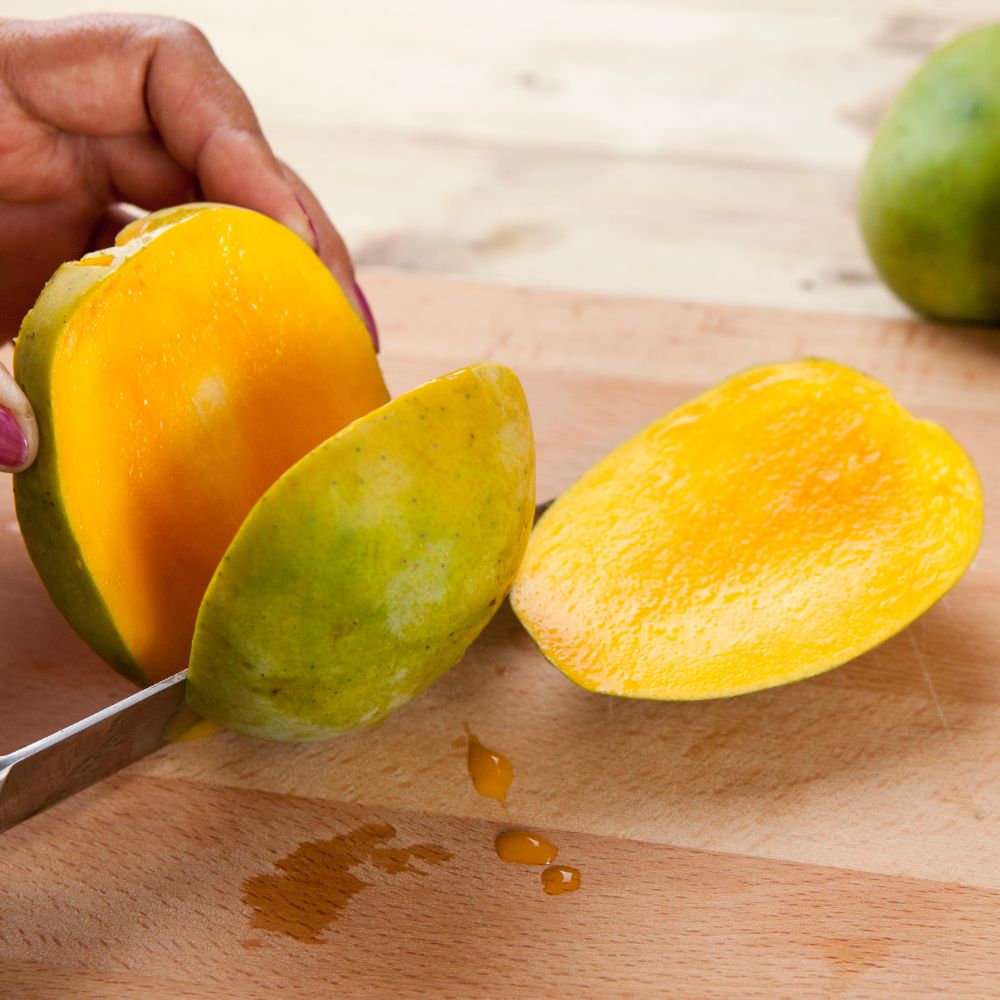
Storing Mangoes
Ripe mangos can be stored in the refrigerator for up to five days.
To extend their shelf life, you can freeze them in an airtight container for up to six months. Just be sure to thaw them before serving to your baby.
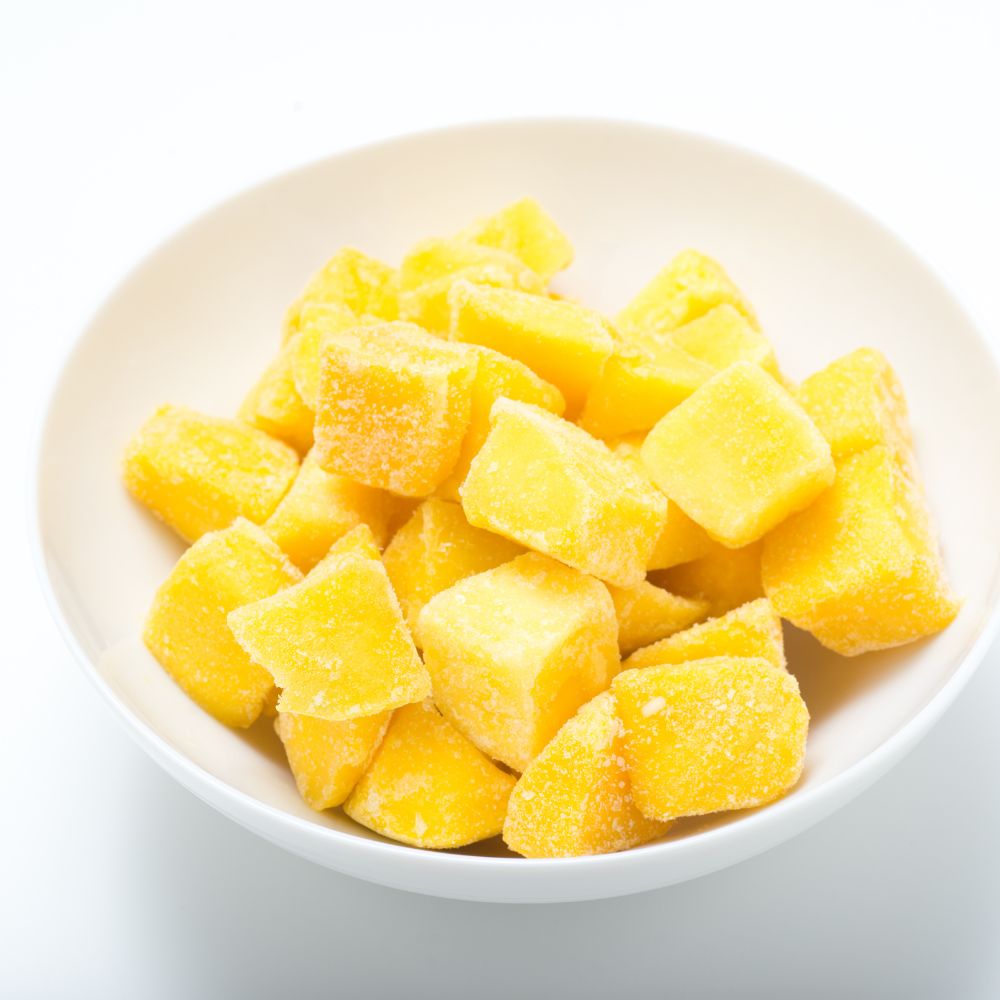
How do you make mangoes ready for baby-led weaning?
Organic Mangoes are Best
If our pocket and context allow it, offering our baby organic products, including mango, is always beneficial.
Choosing organic can reduce your baby’s exposure to potentially harmful chemicals.
Washing it Thoroughly
Even if we don’t eat the mango’s skin, it is still imperative to wash it completely because cutting it can transfer bacteria to the mango’s flesh, which our infant will eat.
How to properly wash a mango:
- Under running water, rinse the mango.
- Rub gently to get rid of any dirt or leftovers.
- Spend 12 to 15 minutes soaking in 1 tsp baking soda solution to 2 cups cold water.
- Rewash the mango in running water once more.
- Use a fresh cloth to pat the mango dry.
Serve it Frozen as an Alternative
Frozen organic mangoes might be a decent substitute if fresh mangoes are not easily accessible.
They can be mashed or puréed after being defrosted.
Or you can also offer them to your baby as a popsicle.
When Can Babies Eat Mangoes?
Babies can start eating mangoes after 6 months of age if they have been introduced to solid foods and are developmentally ready for finger foods.
Your baby can start solids if:
- Sits on their own and has good control of their head and neck.
- When you offer food, they either open their mouths or try to grab it.
- Your baby can move food from the front to the back of his or her mouth to swallow.
- Your baby doesn’t have to spit out the food.
How to Serve Mangoes in BLW
When serving mangoes as a part of baby-led weaning, it’s important to consider your baby’s age and development.
Here’s a guide on how to serve mangoes to your baby at different stages of development:
6-9 Months Old
The safest way to serve mangoes to babies in this age range is to offer them the mango pit peeled, with most of the flesh removed. Your baby can then nibble the fruit with less risk of choking.
You can also cut the mango into lengthwise spears and serve it with shredded coconut for added texture.
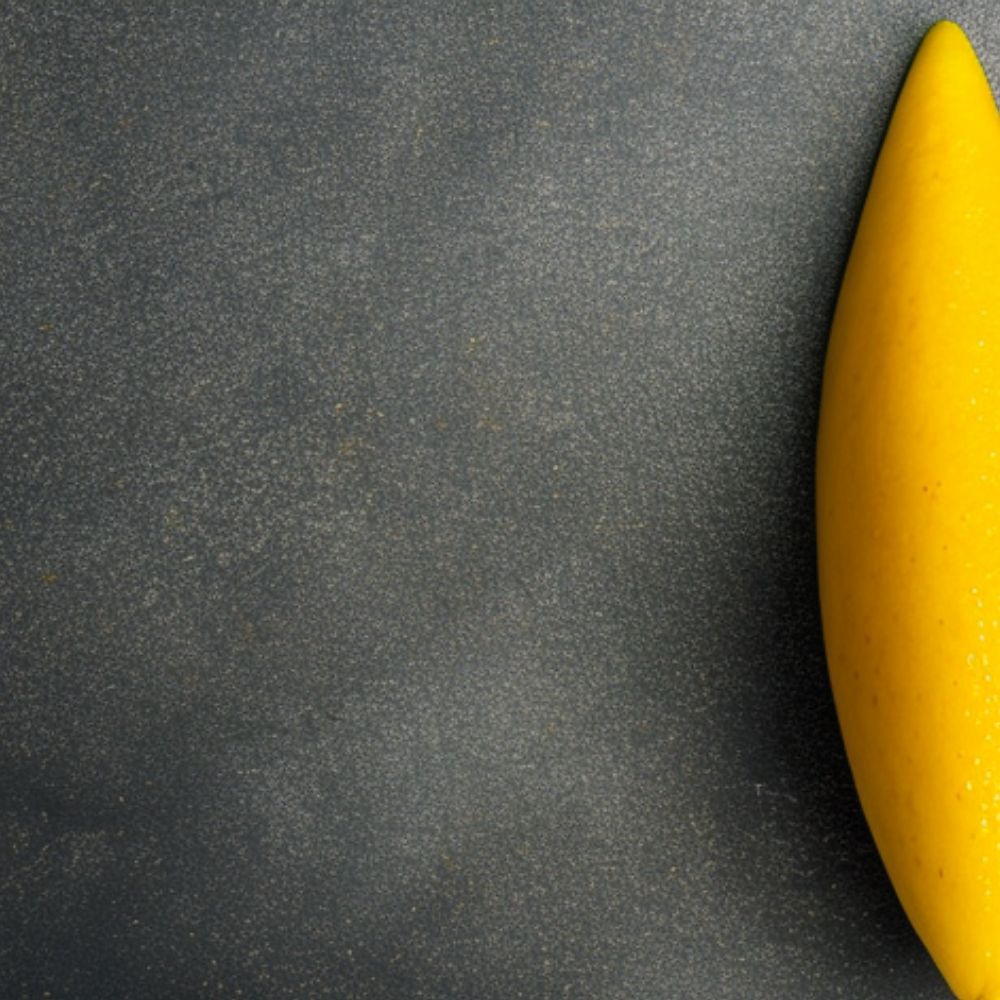
9-12 Months Old
As your baby develops their pincer grasp, you can offer bite-sized pieces of mango as finger food or on a pre-loaded fork.
You can also mince the mango and serve it atop scoopable foods like yogurt or ricotta.
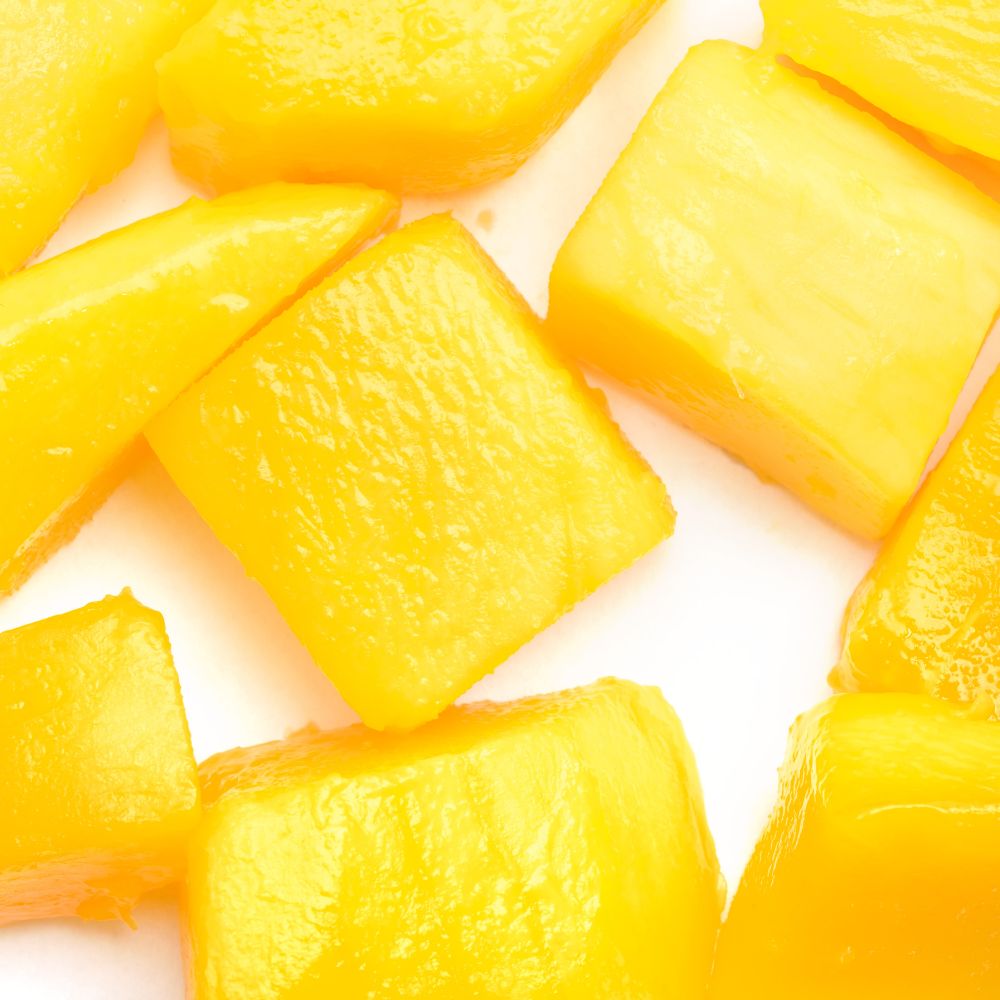
12+ Months Old
At this age, your baby should be able to handle larger pieces of fruit and you will be able to add more flexibility and combine it with other foods. So let your creativity run wild and listen to what your baby likes!
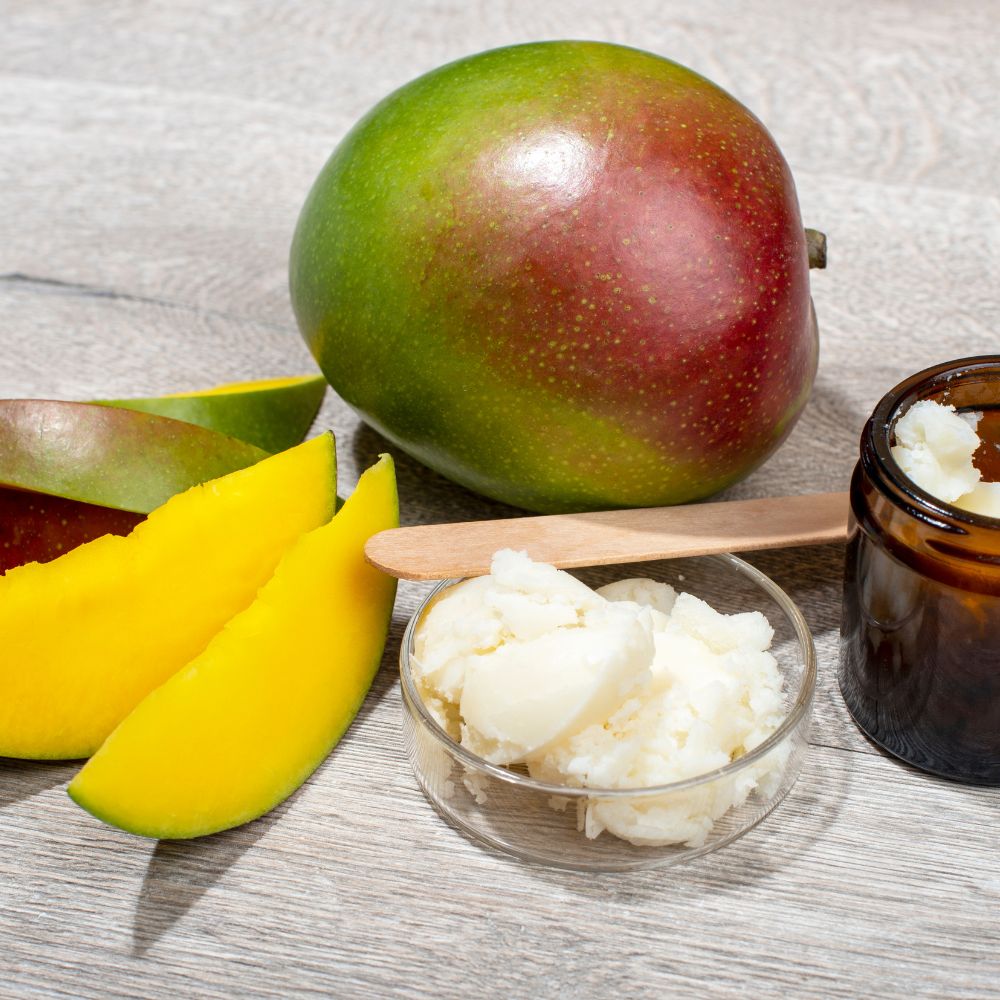
Remember to remove the whole mango pit before serving.
For older kids, small cubes of mango can be a great snack to take on the go.
You can also try making delicious recipes with mangoes, such as coconut mango oat breakfast bites or mango chia pudding.
To make these, combine mango with other whole foods such as self-raising flour, organic mangos, lime juice, and a teaspoon of cinnamon.
Mix all the ingredients and bake in the oven or chill in the fridge.
To ensure your baby gets the most nutrients from mango, you can also try making a mango and strawberry puree.
Blend fresh mango and strawberries with natural juices to create a delicious puree your baby will love.
You can also serve mango in thin spears or larger chunks for older kids.
Mango recipes for BLW
Here you have three mango recipes easily modified to suit your baby’s taste.
Mango Fruity Mash
Ingredients:
- 1 Ripe Mango
- Any other fruit you have already introduced
- Breastmilk, formula, or water
Steps:
- Cut the fruit into small pieces
- Blend the fruit and the milk or water until it has the consistency of a puree
- Serve your baby with a baby spoon so they can self-feed
Mango Coconut Yogurt (9+months)
Ingredients:
- 1 ripe mango, peeled and pitted
- 1/2 cup plain yogurt
- 1/4 cup shredded coconut
Steps:
Cut the mango into small pieces. In a bowl, mix the mango and yogurt.
Stir in the shredded coconut.
- Spoon the mixture into a serving dish or onto a spoon for your baby to enjoy.
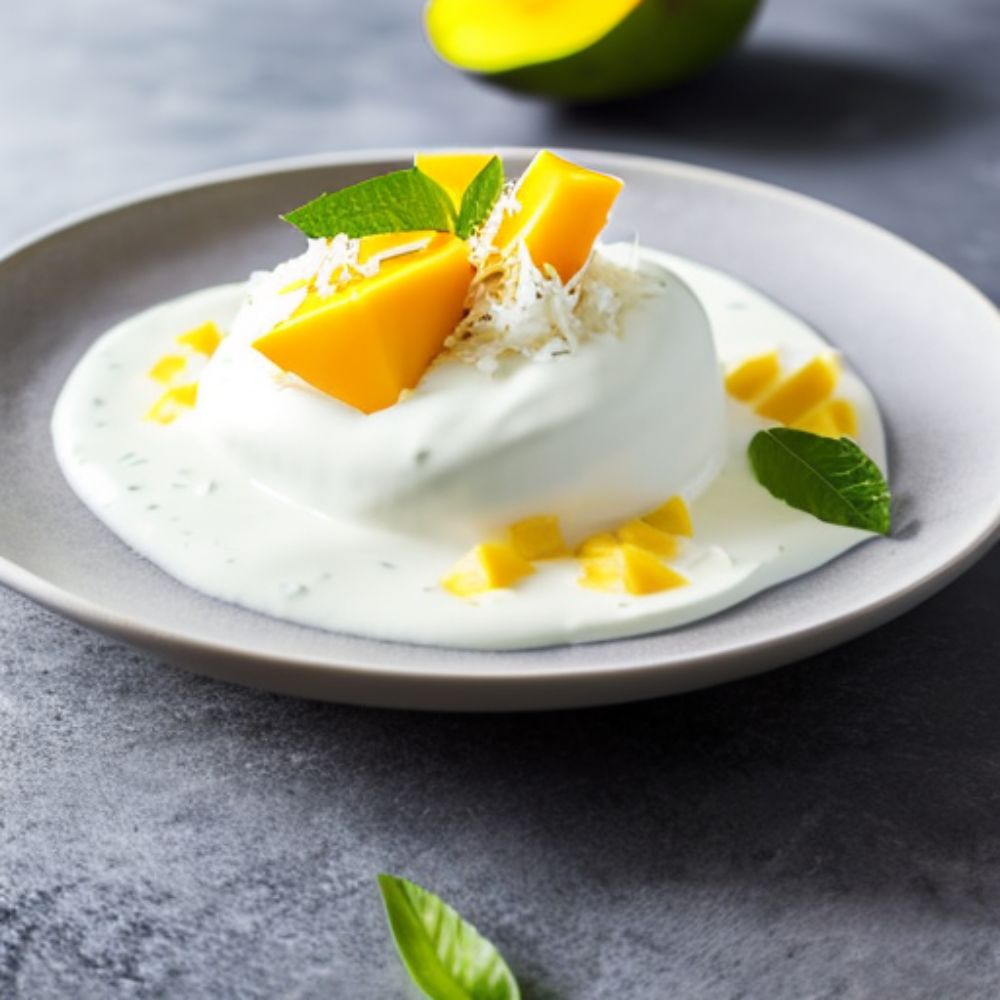
Mango and Banana Oatmeal
Ingredients:
- 1/2 ripe mango, peeled and pitted
- 1 ripe banana
- 1/2 cup oats
- 1 cup water, breastmilk or formula
Steps:
- Cut the mango and banana into small chunks
- Boil the water and stir the oats
- Once the oats are soft, turn off the heat and add the mango and banana chunks
- Mash the mixture so the consistency is appropriate for your baby
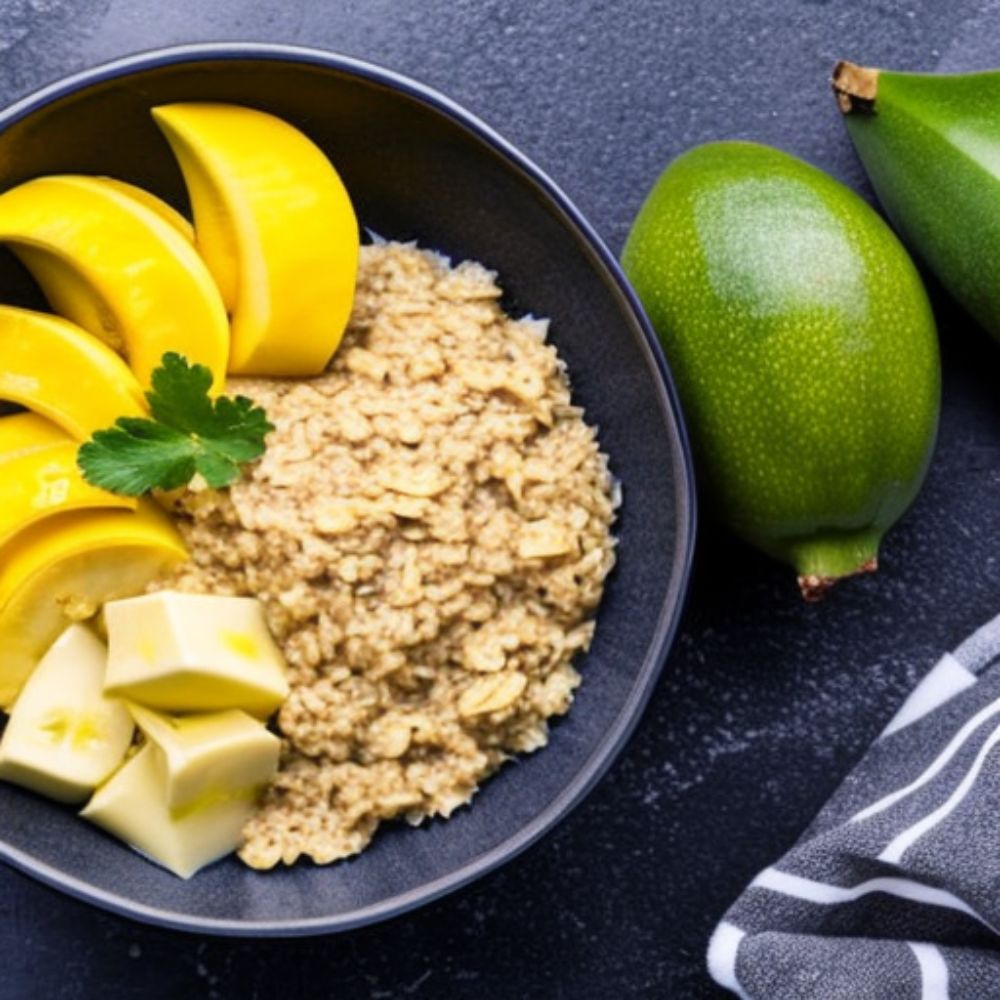
Mango Safety Concerns
Choking hazards and safety issues can arise when babies first start eating solid foods.
To protect your baby’s safety when serving mangoes in BLW, there are a few important considerations to make.
Choking Hazard
Mangoes are slippery, which can be worrying when it comes to choking. It’s always best to offer big pieces of mango or even the whole pit to prevent dangerous situations.
Once your baby develops better skills with solids, you can start offering smaller chunks little by little to build their fine motor skills.
Allergen
Some people are allergic to mangoes, so watching how your baby reacts to them is essential.
Before giving mangoes to your baby, talk to your pediatrician if allergies run in your family or if your baby has had allergies in the past.
Unripe Mangoes
If your baby eats unripe mangoes, they could have digestive problems like an upset stomach and diarrhea.
Mangoes should be picked when they are ripe and feel soft when touched. They should also be free of any bruises or pale patches.
If you press on a mango and it gives way too much resistance, it is not yet ready to be eaten, and you should wait for it to ripen some more before giving it to your baby.
Blw Mango FAQ
Can you give a 6-month-old mango?
Yes, mangos can be introduced to babies as early as six months old as a complementary food.
Just make sure to offer it correctly to avoid potential risks.
Can babies choke on mango?
Mangos can pose a choking hazard for babies due to their slippery texture.
Make sure to offer it according to what we recommend in this article.
Is mango a laxative for babies?
Mangos have naturally occurring sugars that can sometimes cause a mild laxative effect in babies.
However, if you offer small quantities, which is what you should do, your baby will be just fine.
How do you soften mango for babies?
To soften mangoes, you can microwave or steam them. Or just be patient and leave them at room temperature for some days.
How common is mango allergy?
Although it is not very common, mango allergy is possible.
Mango allergy affects fewer than 2% of the general population, according to certain research.
Should mango be cooked for baby?
Cooking mangoes is not necessary for babies. Just wait until they are ripe and soft before offering them to your baby.
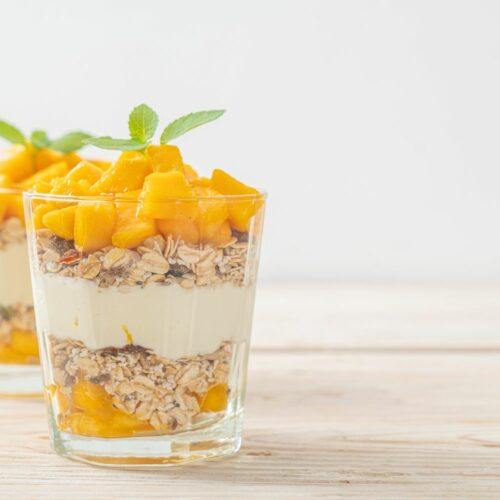
Mango Banana-Yogurt with Granola for Baby-Led Weaning
Ingredients
- 1/2 ripe mango peeled and cut into small bite-sized pieces
- 1/4 cup whole plain yogurt
- 1/2 ripe banana
- 1/4 tsp Ceylon cinnamon
- 1 tbsp Granola (optional)
Instructions
- In a small bowl, mix the mashed banana with plain yogurt and Ceylon cinnamon.
- Top the yogurt mixture with bite-sized pieces of mango.
- Sprinkle granola on top for some crunch, if desired
- Serve and let your baby explore. Offer it with a baby spoon or embrace the mess and let your baby use their hands.
Notes
- When choosing a mango, look for one that is ripe but not overly soft. It should yield slightly to pressure but still hold its shape.
- Ceylon cinnamon is a milder variety of cinnamon that is perfect for babies. If you can’t find it, regular cinnamon will also work.
- Make sure the mango pieces are small enough for your baby to handle and chew.
We’re Maria and Alberto, a married couple and educators who are nutrition enthusiasts. Even before we had kids, we were already crazy about nutrition.
We’d read scientific articles, watch videos from nutritionists, and spend hours listening to nutrition podcasts.
Today, we continue doing this, but in a different way, as we’ve learned to sift through the noise and trends. Nutrition, like any other field of knowledge, the more you read and learn, the more you develop a comprehensive understanding of reality, and that’s what has happened to us.
Before having our first child, we focused on learning everything we could about child nutrition, using the same techniques we had already employed, backed by our extensive knowledge in nutrition.
Our mission is to help other parents with their children’s nutrition, to help them become the best versions of themselves.
If we are what we eat and drink, which is absolutely true, let’s do it right!


